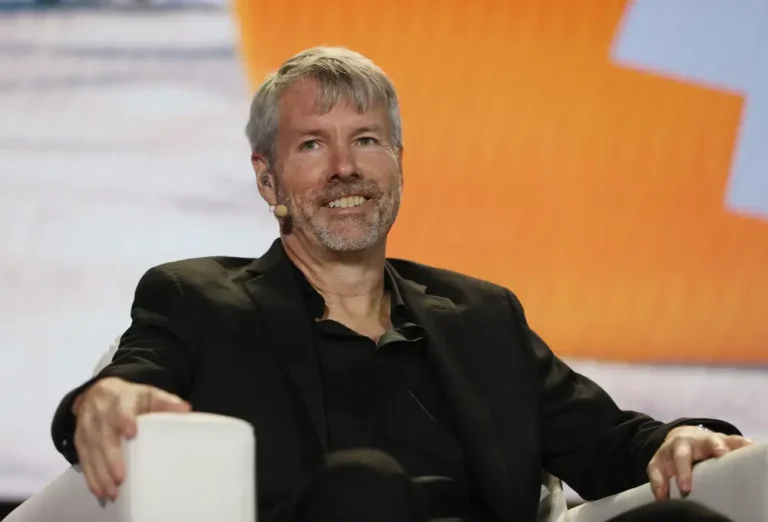The conversation around hedge-fund fees is reaching a fever pitch. Blame the talent.

Hedge-fund investors big and small are once again focused on the industry’s most contentious topic: fees.
In the decade or so leading up to the pandemic, the average hedge-fund fee slowly declined, but this year was the first time it rose in a decade. A BNP Paribas survey of 238 allocators from the start of 2024 found that performance fees jumped to 17.8% from 16.9% in 2023, while management fees bumped up to 1.54% from 1.46%.
It was a function of supply and demand. Thanks to the stability many top multistrategy hedge funds displayed at the onset of the pandemic, LPs scrambled to get in. These sprawling managers, though, are the most expensive type of hedge fund, with much higher head counts and more-complicated systems than peers that focus solely on equity trading or macro investing.
These funds used this demand to lock investors into high-fee agreements, but as interest rates have risen without a corresponding bump in returns, many allocators are wondering what they’re paying for. The hedge-fund allocator Aurum found that multistrategy funds were up, on average, by 6.1% in the first half of 2024, trailing the average quant-only fund and the S&P 500’s return of 15% over the same period.
Some of the largest institutional investors, led by the $200 billion pension Teacher Retirement System of Texas, have gone so far as to publish an open letter to the industry, calling for managers to adopt a cash hurdle that would prevent them from receiving performance fees above what US Treasury bonds would return.
The industry has “gone full circle” on fees, said Lilly Knight, a cohead of investment management at Franklin Templeton’s K2 Advisors, a $10.2 billion fund of hedge funds, and frustration is mounting.
K2, she said, “has gently walked away from a few multistrats, reduced our allocations.”
LPs are paying not for performance but for the talent war, which has led to in-demand portfolio managers receiving eight-figure guaranteed payouts. While multistrategy firms’ structure — which combines teams trading different asset classes in many geographies to generate stable returns that are uncorrelated with the markets — is still beloved, the space has gotten so crowded that there’s not enough talent to fill seats.
This shortage is pushing the industry to a breaking point.
People problems
Many funds hoping to keep or attract top talent have resorted to charging — on top of a management fee, a performance charge, and a pass-through expense — a fixed fee that creates a pool of money just for paying PMs, Knight said. This new structure, which Knight said many funds rolled out in the past year, is a break from the traditional model.
Knight declined to name specific funds that had introduced this charge, but one example is Marshall Wace, which introduced a 75-basis-point fee just for talent. While such measures seem extreme for some allocators, it’s clear the industry’s talent shortage isn’t going away anytime soon. For example, in rebuilding its equities franchise, Balyasny has doled out more than $200 million, Bloomberg reported. The firm has historically spent about 1% of its assets under management on new talent.
In the past, Knight said, the management fee was used to run the business while the performance fee was used to “pay the people.”
A fixed fee turns that notion on its head because it guarantees payouts to investors who might not end up making any money.
“You want people to be rewarded after the fact,” she said.
Insulated at the top
Top hedge funds like Millennium and Citadel aren’t feeling the heat as intensely on fees as the industry’s middle class.
There’s still demand for the top tier of the industry, regardless of fees, said James Ouderkirk, the director of business development at GLASfunds, a $3 billion alternatives platform that works with advisors for the wealthy.
“They understand that the returns have been there” at those managers, Ouderkirk said, adding, “The fee pressures there are just not felt.”
His platform recommends four multistrategy options to its clients, including Morgan Stanley’s Riverview Omni.
Lesser-known multimanagers and new launches, though, are getting pushback. Even with Bobby Jain’s pedigree, his firm launched in July with $5.3 billion — less than many thought he would raise. Three people speculated that if Jain Global had launched five years earlier, it would have matched the $8.6 billion haul Michael Gelband’s ExodusPoint pulled in.
Some managers have found ways to keep talent costs down. Norias Research, from the former Point72 president Doug Haynes, garnered interest from LPs because it didn’t have a pass-through fee thanks to its quantamental structure. Systemic-trading funds such as CenterBook Partners pull investment data from dozens of partner funds that get a portion of the firm’s performance fees but don’t have to hire scores of individual PMs to get a diversified return stream.
The Boston-based firm Acadian Asset Management launched its multistrategy hedge fund 4 1/2 years ago with no gates, no lockups, and no pass-through fees. Mike Gleason, the firm’s director of equity alternative strategies, said it offers monthly liquidity to its investors.
The firm has been focused on keeping costs down, Gleason said, and is intentional about adding strategies to the fund — never planning to exceed a dozen or so total.
“We are building them in a very purposeful way to fit them together,” he said.
Being particular about the strategies it adds helps the fund keep its head count down — and not compete for the same talent as the largest managers.
“If you can control the costs, you can recapture some of that alpha,” Gleason said.
Who should be paid
Corbin Capital, an alternatives investor that allocates to hedge funds, isn’t an investor in the biggest platforms, partly because they’re “so hard to evaluate,” said Craig Bergstrom, the firm’s chief investment officer. But generally, he said, fees in the industry are too elevated for the market reality.
Decades ago, at the start of the industry, the best hedge funds could outperform thanks to higher volatility and less competition. This isn’t the case anymore, and a larger chunk of the fees paid is going to a general partner’s business instead of its moneymakers.
“How rich do you need your hedge-fund manager to be?” he said.
He and others in the industry are happy to pay when performance comes along with it. He said some of his portfolio’s best performers were firms that charged higher fees, and there are plenty of examples in the industry of leading managers charging exorbitant fees because investors know they’re worth it. For instance, the holy grail of hedge funds, Renaissance Technologies’ famed Medallion fund, charges its investors more than double the once standard 2 and 20 — and would have allocators knocking down its door if it opened to new capital.
Bergstrom is also happy to support firms when it makes sense.
For example, he said, a small firm Corbin Capital is invested in asked for a fee increase because its talent was at risk of being poached by some of the pod shops.
“They told us that this was to pay their people, not themselves,” he said.
“We thought that was very reasonable and went ahead with it.”






